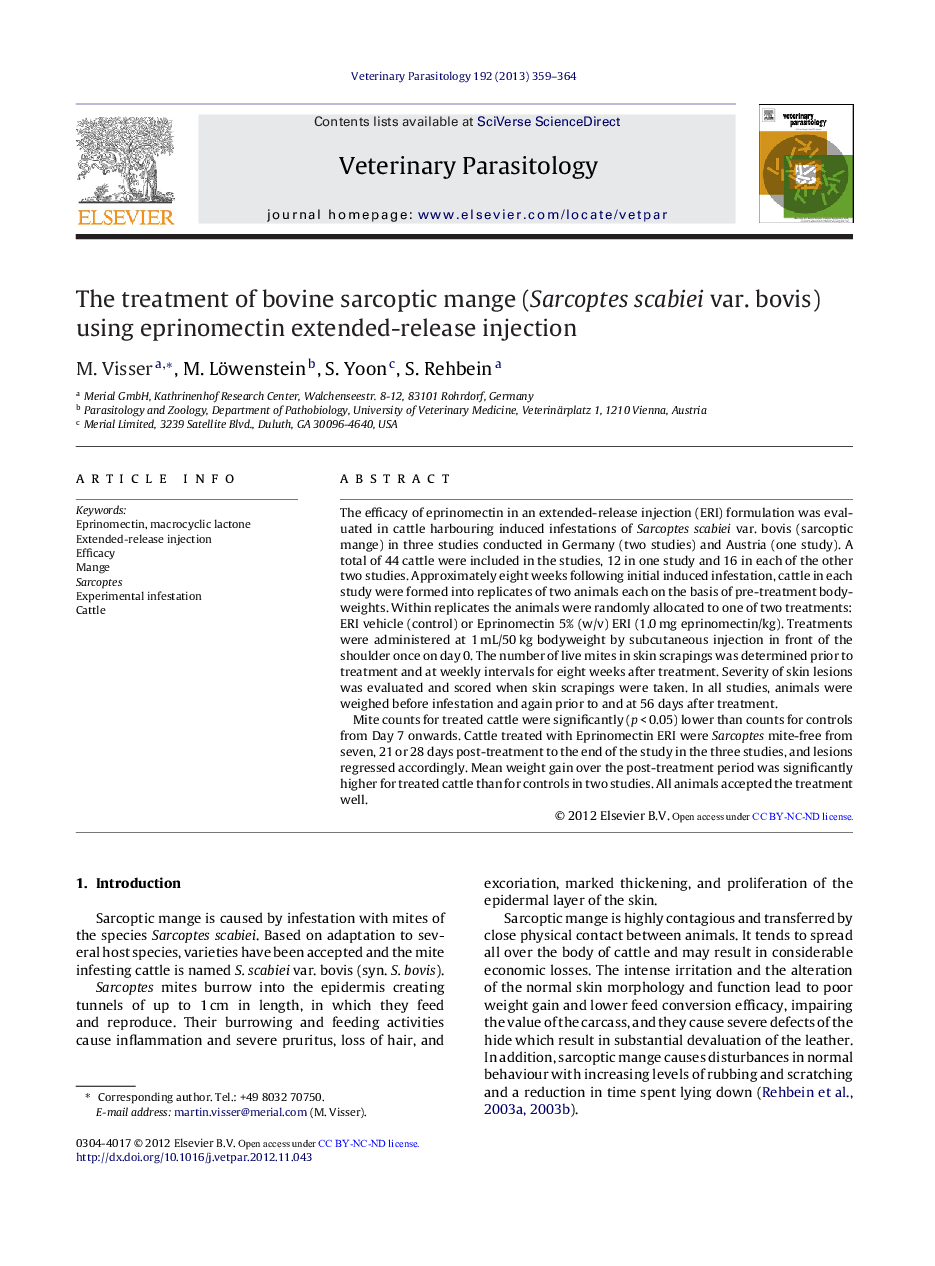| Article ID | Journal | Published Year | Pages | File Type |
|---|---|---|---|---|
| 2470095 | Veterinary Parasitology | 2013 | 6 Pages |
The efficacy of eprinomectin in an extended-release injection (ERI) formulation was evaluated in cattle harbouring induced infestations of Sarcoptes scabiei var. bovis (sarcoptic mange) in three studies conducted in Germany (two studies) and Austria (one study). A total of 44 cattle were included in the studies, 12 in one study and 16 in each of the other two studies. Approximately eight weeks following initial induced infestation, cattle in each study were formed into replicates of two animals each on the basis of pre-treatment bodyweights. Within replicates the animals were randomly allocated to one of two treatments: ERI vehicle (control) or Eprinomectin 5% (w/v) ERI (1.0 mg eprinomectin/kg). Treatments were administered at 1 mL/50 kg bodyweight by subcutaneous injection in front of the shoulder once on day 0. The number of live mites in skin scrapings was determined prior to treatment and at weekly intervals for eight weeks after treatment. Severity of skin lesions was evaluated and scored when skin scrapings were taken. In all studies, animals were weighed before infestation and again prior to and at 56 days after treatment.Mite counts for treated cattle were significantly (p < 0.05) lower than counts for controls from Day 7 onwards. Cattle treated with Eprinomectin ERI were Sarcoptes mite-free from seven, 21 or 28 days post-treatment to the end of the study in the three studies, and lesions regressed accordingly. Mean weight gain over the post-treatment period was significantly higher for treated cattle than for controls in two studies. All animals accepted the treatment well.
